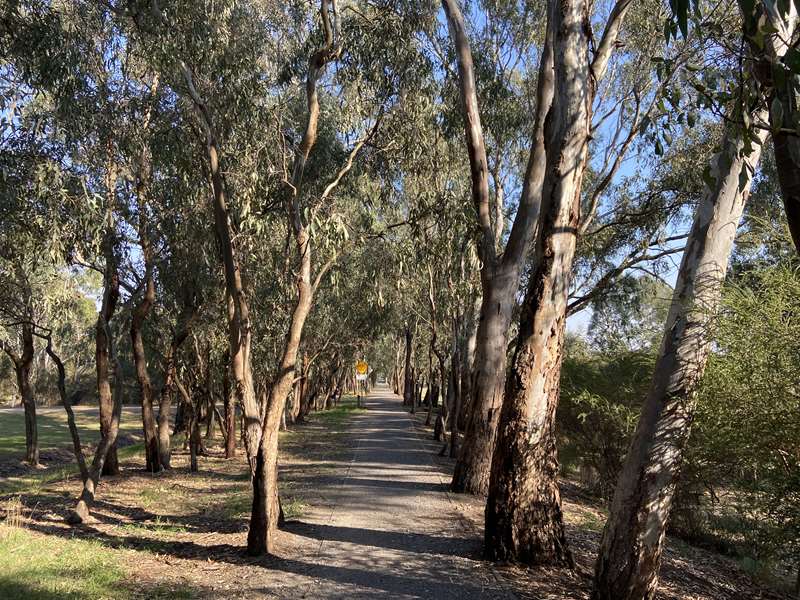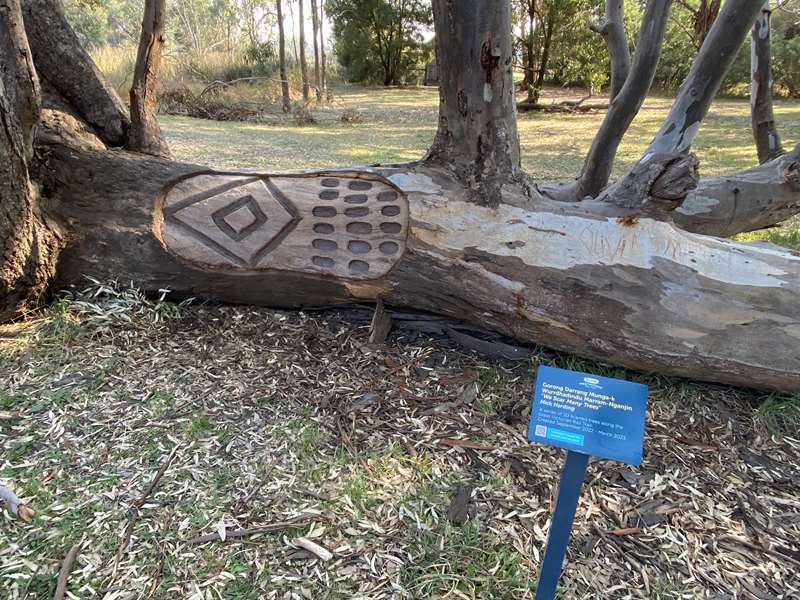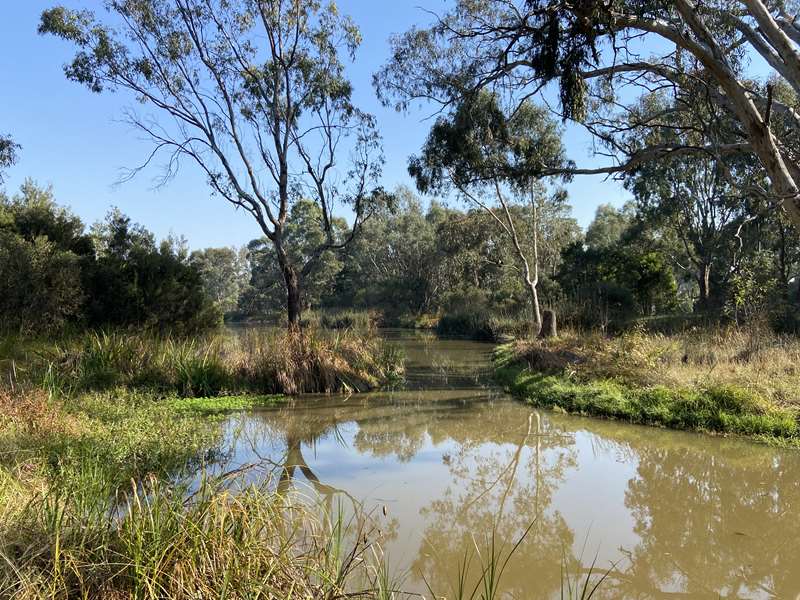Mansfield Mullum Wetlands Walk


The Mansfield Wetlands provide a habitat for native fauna and are a beautiful and accessible example of a living wetlands ecosystem.
The Great Victorian Rail Trail passes through the Mansfield Mullum Wetlands. Walk or cycle along the trail or do the circuit. A full circuit of the Mansfield Wetlands is approximately one and a half kilometres, so allow 45 minutes. Seating and a bird hide is available along the route.
Developed and maintained by volunteers, the wetlands also contribute to water quality improvements in local catchments.
History
The rail line, which passed through the wetlands area, was officially opened in 1891 and closed to passengers in May 1977. Freight use ended in the following February. This was followed by the gradual running down of the timber milling industry in Mansfield, and the closure of the mill at the western end of the land on the east side of Withers Lane, and the mill directly north of the station and goods yard. Following this, a growing recognition of the importance of this land to the community as both a historical site and as the gateway to Mansfield evolved concurrently with the growing importance of tourism to the region.
State and Federal grants were obtained to establish a wetland. A specialist consultant designed and constructed the wetland. Large-scale plantings were carried out. When the grant money was spent, Mansfield Shire Council stepped in to complete the purchase of plants, but there was no budget for maintenance. In response, the Friends of the Mansfield Mullum Wetlands group formed, to maintain and develop the area using volunteer labour and some further project grants.

Trails from the Information Centre along the railway line to and through the wetlands, a lookout, footbridges, a boardwalk and a bird hide were all constructed. When the Friends group closed in 2016, Ford's Creek Landcare took over the role of liaising with Council officers on management and maintenance issues, and carrying out some planting and weed control.
Map of Wetlands:

Note: The eastern end is at the Mansfield Visitor Information Centre and the western end is Withers Lane.
Numbered Tiles (shown on map below). These ceramic tiles were made by Mansfield Primary School students.

1. Information Centre and Canoe Tree.
2. This historic water tank once supplied water to steam engines on the railway line.
3. Disused saw mill behind the Wetlands.
4. Be careful of snakes, but remember that they are protected native animals that are rarely aggressive if avoided.
5. Although this River Red Gum fell over some years ago, it continues to grow. Detour here to visit the Bird Hide.
6. Dead trees, like the one in this pool, are valuable habitat for many birds and animals, especially if they have hollows that can be used for nesting and breeding.
7. Ducks and other water birds abound here, nesting and feeding.
8. The seat provides a chance to rest and enjoy the view.
9. Many aquatic plants and insects can be seen along the boardwalk.
10. Water filters through the Wetlands from the town stormwater drains to Ford's Creek. The dense and varied aquatic plants growing here improve the water quality by capturing sediments and removing
pollutants. Floating vegetation is part of the flourishing ecosystem. The nearby seat is hand made from recycled rail metal and local River Red Gum timber.
11. The Wetlands provides valuable habitat for frogs and tadpoles. Frogs can often be heard calling.
12. Enjoy the outlook from the viewing platform, about 25 metres ahead on your left. Please take any litter with you when you leave.
Numbered Plants
1. River Red Gum (Eucalyptus camaldulensis)
2. Rough-barked Honey-myrtle (Melaleuca parvistaminea)
3. Manna Gum (Eucalyptus viminalis)
4. Drooping Sheoak (Allocasuarina verticallata)
5. Golden Wattle (Acacia pycnantha)
6. Tussock Grass (Poa labillardierei)
7. Varnish Wattle (Acacia verniciflua)
8. Blackwood (Acacia melanoxylon)
9. Mountain Swamp-gum (Eucalyptus camphora subsp. humeana)
10. * Willow Bottlebrush (Callistemon salignis)
11. Black Wattle (Acacia mearnsii)
12. Red Box Eucalyptus polyanthemos
13. Bundy or Long Leafed Box (Eucalyptus goniocalyx)
14. * River Peppermint (Eucalyptus elata)
15. Ovens Wattle (Acacia pravissima)
16. Tassel Sedge (Carex fascicularis)
17. River Tea-tree (Leptospermum obovatum)
18. Spiny-headed Mat-rush (Lomandra longifolia)
19. River Bottlebrush (Callistemon sieberi)
20. Silver Wattle (Acacia dealbata)
21. Water Plantain (Alisma plantago-aquatica)
22. Prickly Tea-tree (Leptospermum continentale)
24. Marsh Club-sedge (Bolboschoenus medianus)
All plants labelled in the Wetlands are Australian natives, and most are indigenous (meaning that they are local to this area). Only numbers 10 and 14, marked with an asterisk (*), are not indigenous to the Mansfield area.

Review:
A very pleasant walk through a wetlands area. Unfortunately the markers with ceramic tiles are no longer there (except for the first one). Lots of trees are labelled with their names. If you come across the River Peppermint tree beside the path, crush a leaf between your fingers and experience the divine smell of peppermint.
The path follows the Rail Trail with some side tracks. At the start of the walk there is a bike repair station.
In autumn there is a line of beautiful trees beside the main road.
Photos:
Location
175 High Street, Mansfield 3722 View Map
Web Links
→ Mansfield Mullum Wetland Brochure and Map (PDF)








